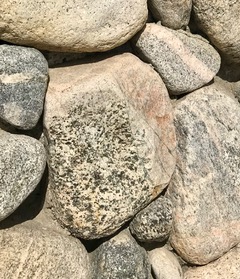-
Rocks
Rocks. They are everywhere. Very, very small ones that make up pebbles and dirt. Medium-sized ones that fit in your hand. Big rocks a stonemason can make walls out of. And huge rocks, like boulders and whole mountains.
Geologists are scientists who study the earth (geo), including volcanos, earthquakes, and rocks.
According to them, all rocks fall into three categories. These categories are igneous, metamorphic, and sedimentary. These are three words I think are fun to say. And here are their definitions:
Igneous rocks are formed inside volcanos. The heat is so intense, rock melts and starts to ooze and flow out of the top of these volcanos. Once they are out, they start to cool off and harden. Igneous rocks are the cooled and solidified result.
Metamorphic rocks are igneous rocks that start to change under pressure, heat, and sometimes chemical processes, usually while they are buried deep under the Earth’s surface. They alter or change from simple harden, molten rocks.
The third kind of rock is called sedimentary. The earth is changing all the time. It rains, it snows and freezes, winds blow, and earthquakes shake things up. All this activity affects the rocks and dirt. Rain pounds down on mountains and huge rocks are loosened, small rocks are sent tumbling, and small bits of sand and dirt get washed down rivers into the ocean where it settles to the bottom. After millions of years of layers and layers of dirt and rocks pressing down change the composition of the dirt. It gets pressed into a new kind of rock—sedimentary, which means it is made from sediments, or leftover bits of rocks.
Look around when you are outside. Can you spot each different kind of rock? I found these three in the wall outside my house.



